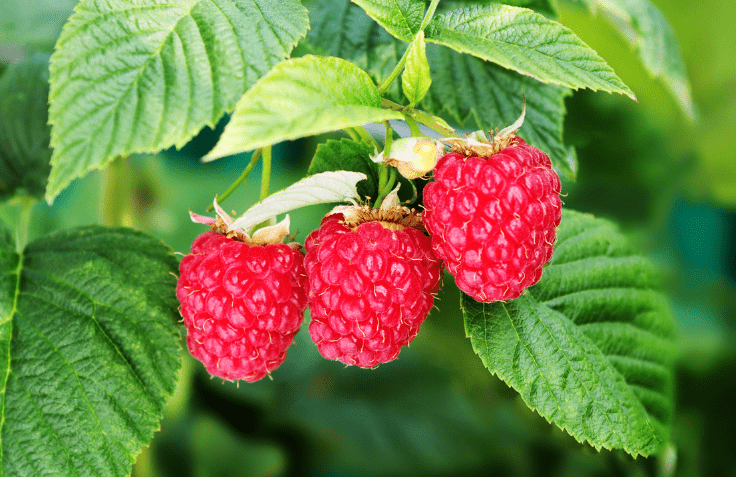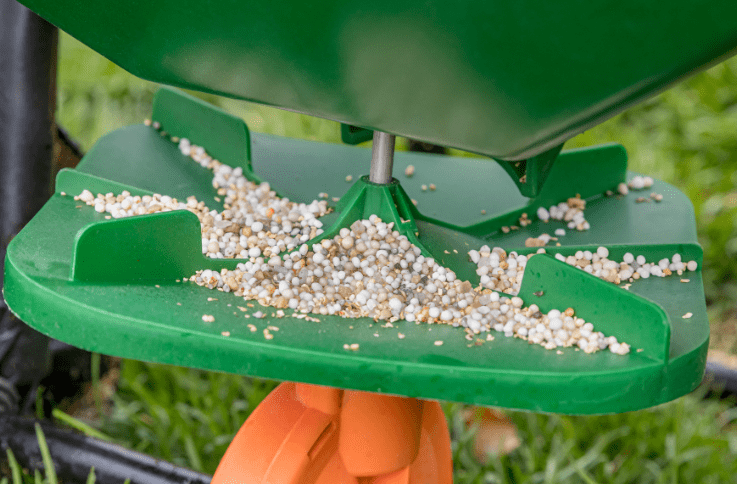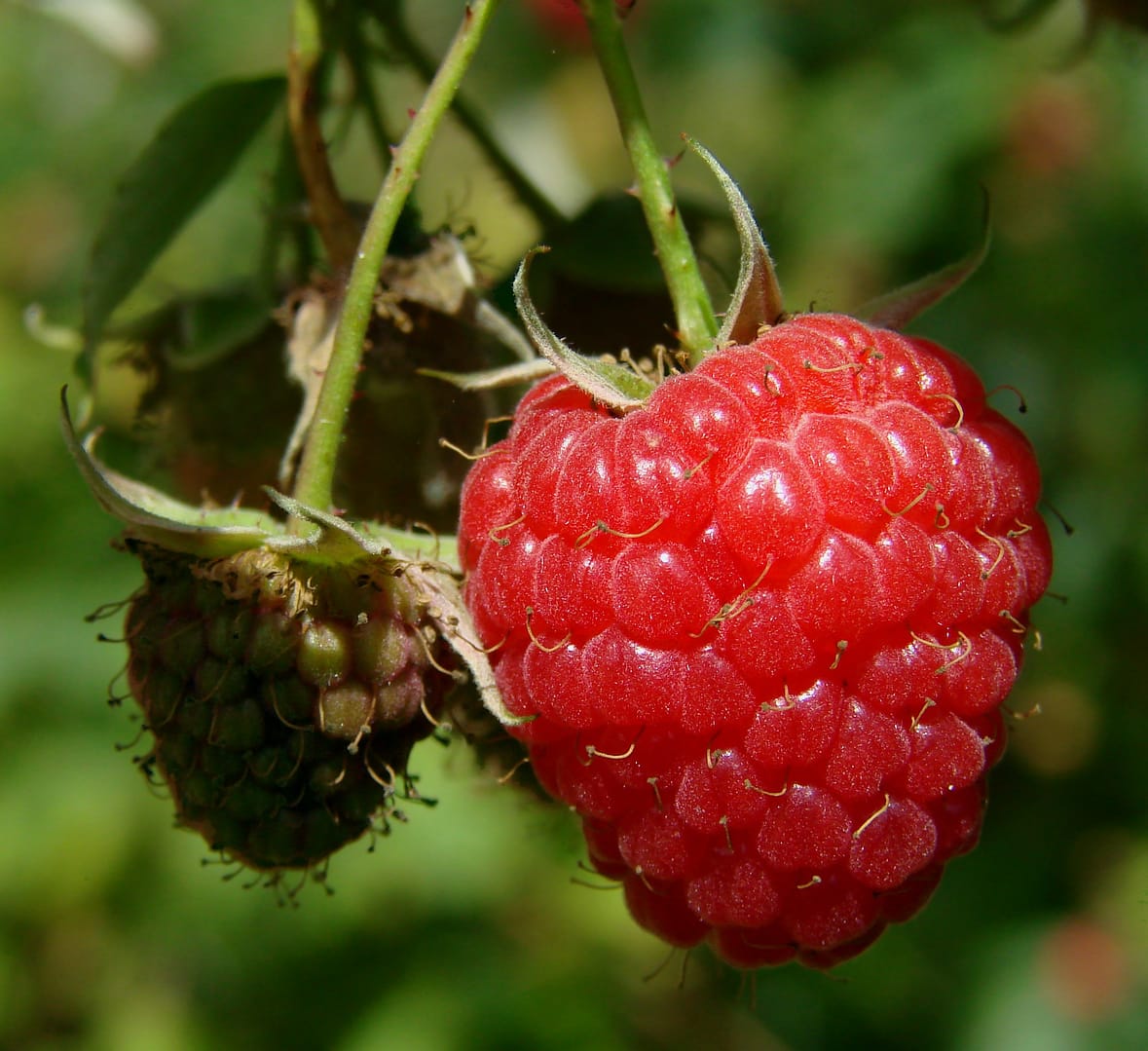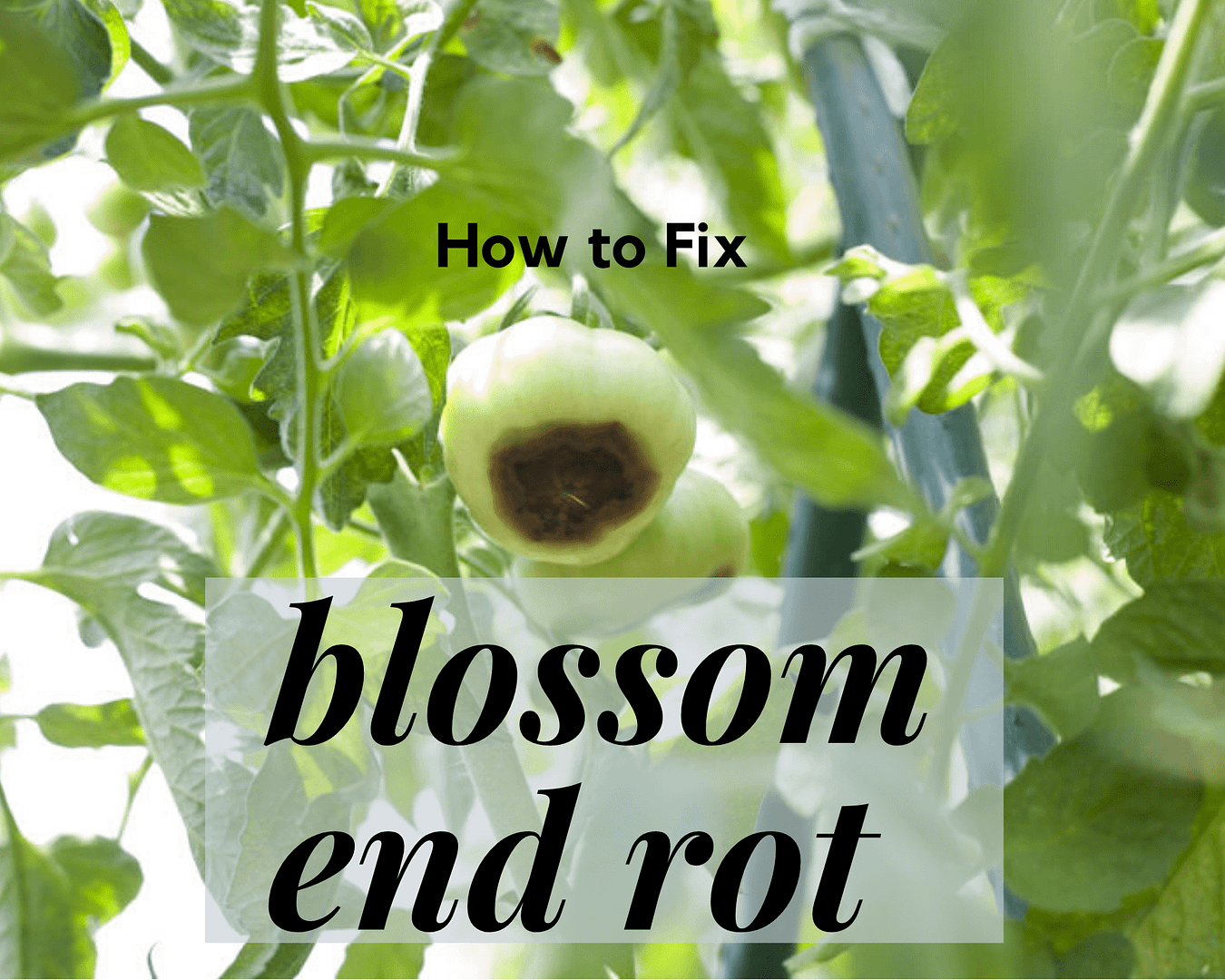This post may contain affiliate links. As an Amazon Associate we earn from qualifying purchases.
To properly fertilize raspberry plants doesn’t take exotic stuff, just your basic N-P-K
While most raspberry (Rubus spp.) cultivars are hardy in USDA plant hardiness zones 3 through 7, some tolerate warmer temperatures and reduced chill hours. Find your growing zone here.
“Autumn Bliss,” (Rubus idaeus “Autumn Bliss”), for instance, is hardy to USDA zones 3 through 11. No matter where in the world you grow raspberries, for maximum yield, fertilize raspberry plants with the right nutrients at the right time to ensure a bountiful harvest.
Don’t worry, they don’t require anything exotic, just your basic N-P-K.
Fertilize raspberry plants at planting
Choose from a variety of products with which to amend the soil when planting your raspberry plant. Organic gardeners may want to use a well-rotted manure or compost, at a rate of 2 cubic yards per 100 square feet of planting area.
Not only do these materials add nutrients to the soil but they improve drainage as well. If you aren’t growing organically, use 1 cup of balanced organic fertilizer such as 3-3-3, and 1/4 cup kelp meal. Whatever you choose, blend the materials with the top 4 inches of soil.
 Fertilize raspberry plants during their first year
Fertilize raspberry plants during their first year
Appropriate care of the raspberry plant during its first year is critical to its future production. You do want lots of fruit, right? While it may not bear fruit in the first year, the plant is collecting nutrients to build strong canes.
Watch it closely as it grows to determine if it requires more fertilizer. Canes that grow to 4 to 6 feet in height are receiving enough nutrients. If, on the other hand, the canes are only growing to 3 feet tall, apply .5 ounce of 16-16-16 fertilizer.
This fertilizer includes the three primary macronutrients — nitrogen, phosphorus and potassium (N-P-K). Sprinkle the granules around the bush, keeping them at least 3 inches away from the base of the plant. Always water after fertilizing to soak it down to the roots.
 Annual fertilizer needs for raspberry plants
Annual fertilizer needs for raspberry plants
In spring of the raspberry plant’s second year, before new growth appears, apply 10 ounces of 5-4-3 fertilizer. This fertilizer is higher in nitrogen, which helps promote foliage growth.
The second number represents the percentage of phosphorus in the fertilizer, which promotes flowering and fruiting. Potassium, represented by the last number in the fertilizer analysis, plays a number of roles in the life of the raspberry plant, from regulating water intake to affecting the color, size and tastes of the raspberries.
Sprinkle the granules around the raspberry plant and use a rake to lightly scratch it in to the soil. Don’t forget to water. Provide another application of the fertilizer at the end of May and again at the end of June.
Fertilizer precautions
Fertilizer that washes into area lakes, streams and rivers causes overgrowth of algae that takes up oxygen and can end up killing fish. Use caution when applying fertilizer to the raspberry bush so that it doesn’t end up in a storm drain or drainage ditch.
Don’t fertilize on a day when heavy rain is expected — it may cause the fertilizer to run off into gutters, waterways and drains.
Sweep up any granules that spill onto the sidewalk or driveway.



